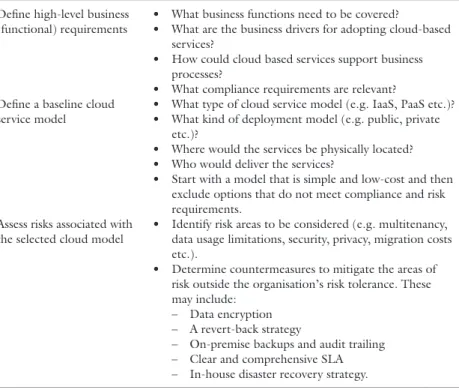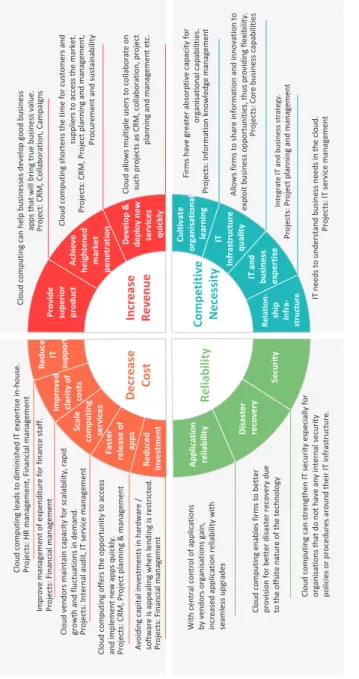It examines and discusses some of the key techniques for measuring the business value of cloud computing in different contexts and illustrates them with mini-case studies. Previously, she was a postdoctoral researcher at Dublin City University in the field of cloud computing.
F InancIal a pproaches to M easurIng B usIness V alue
IRR can be considered the true rate of return in that it takes into account the time value of money and the flow of value over time. Scalability: describes how easily and quickly additional IT resources can be added (or removed) to the portfolio of IT resources available to distributed users.
B eyond M easureMent to M anagIng B eneFIts r ealIsatIon
Value realization also means that there must be some form of accountability for effective use of cloud services, as without effective use it will be impossible to realize IT business value (Devaraj and Kohli 2003). Not all forms of IT use will be value-generating, but if IT is not used or is not useful, business value simply will not arise.
Therefore, careful consideration should be given to the business value of IT in the context of cloud computing. It's not just about where IT support comes from – from the cloud or from a company-owned data center; The business value of IT is not the same anyway.
PaaS sits on top of the cloud infrastructure and abstracts most of the standard application functions such as caching, database scaling, security, logging, etc. In this context, an accurate estimation of the TCO and ROI of the cloud forms the basis for adequate and effective pricing strategies and for evaluating investment decisions (Rosati et al. 2019).
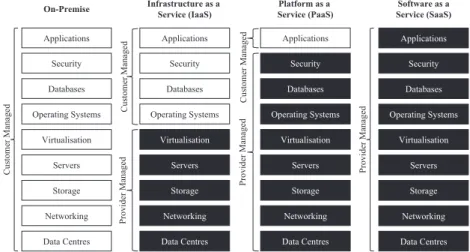
The initial stage of the ROI calculation is an assessment of the organization's suitability for adopting cloud computing. Both the costs and benefits of the on-premise solution represent the basis for evaluating the additional value or costs created by cloud adoption.
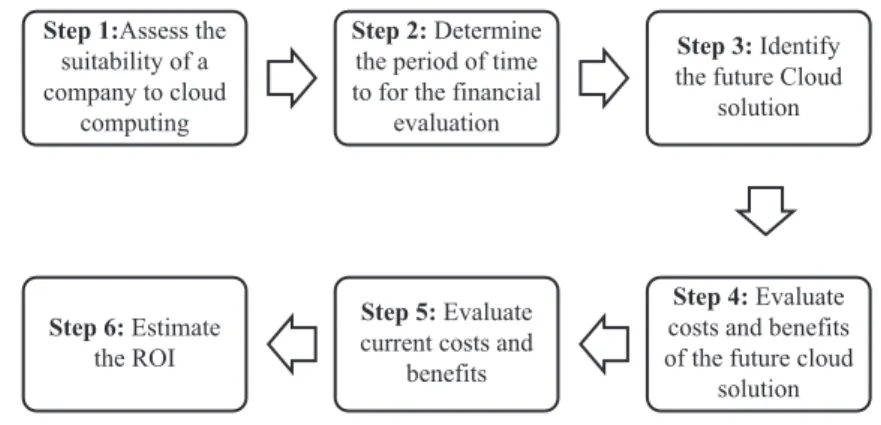
So they decided to install it on an on-premise infrastructure at the company's headquarters. The first step of the ROI calculation involves assessing the company's suitability for the cloud. As such, the company's usage pattern can be profiled as a moderately variable workload with occasional spikes.
Risk perception and risk management in cloud computing: results from a case study of Swiss companies. Identifying a company's suitability for cloud computing adoption and modeling the corresponding return on investment. Cloud Computing and Services Science: 8th International Conference, CLOSER 2018, Funchal, Madeira, Portugal, March Revised Selected Papers, vol.
S tudy B ackground
To address our research questions, we used the Service, Technology, Organization and Finance (STOF) business model framework (Bouwman et al. 2008) that typifies these four overarching dimensions (Table 3.1). The technical architecture relates to the “overall architecture of the components of a technical system in terms of backbone infrastructure, devices, service platforms, access networks and applications” (Bouwman et al. 2008, p. 115). Second, the STOF framework typifies the business model elements contained in the concept matrix recently developed by Peters et al.

M ethodology
The organizational domain revolves around the concept of a value network consisting of actors possessing "certain resources and capabilities that interact and together perform value activities to create value for customers and realize their own strategies and goals" (Bouwman et al. 2008, p. 116). This domain focuses on financial arrangements that "revolve around investment decisions, revenue models and revenue sharing arrangements ... [and] are aimed at average cost efficiency, net cash value and internal rate of return" (Bouwman et al. 2008, p. 116). Third, it has previously been used to assess the impact of SaaS technologies on business models (Lee et al. 2014), although it should be noted that these aforementioned studies have not focused on established IT service providers.
Both organizations are rapidly moving towards agile methodologies to effectively create value by delivering SaaS technologies. SaaS has allowed eligible organizations to significantly reduce their operating costs compared to the traditional way of operating. This transformation not only led to cost savings, but also enabled the two case organizations to improve their business agility.
Two key features in the cloud marketplace are (i) service descriptions for core and integrated services, and (ii) trust. Many B2B cloud marketplace platforms have a partner program with software vendors to help them plan and develop applications. For cloud customers, using a cloud marketplace provides them with two core value-added services: (1) Single-sign-on (SSO) and (2) Integrated event and billing management.
B eneFIts oF B2B c loud M arketplace
Since the business model of the cloud market assumes low customer switching costs, software vendors must ensure customer satisfaction and usage. In addition, cloud marketplace software typically offers a free trial period to allow customers to decide if the software is right for them (Phelan 2015). Both mini-case studies focus on how customers could use B2B cloud marketplaces to create, capture and measure business value.
For example, if there is only one person using the software for a given period, customers may subscribe to one seat for that period and no further. The first case is Salesforce AppExchange, a B2B cloud marketplace that offers both applications and APIs, and the second is RapidAPI, a B2B API marketplace. The business value of using the Localytics application can be conveniently measured in Salesforce.com by the conversion rate of customers who receive a message and make a booking within the same day, as well as the raw dollar amount received for the bookings.
M InI - case s tudy II: r apId apI
67 messages are addressed to customers traveling without any hotel and/or rental car reservations. Not only was the customer able to access the data they needed, but the additional data inspired additional features and functionality for RecipeApp. Using an off-the-shelf API through a cloud marketplace enabled the startup to accelerate their time to market, innovate and demonstrate their proof of concept at a fraction of the cost, time and effort if they were to undertake all data collection or API development themselves.
Images or other third-party material in this chapter are covered under the chapter's Creative Commons license, unless otherwise indicated in a credit line for the material. If the material is not covered by the chapter's Creative Commons license and your intended use is not permitted by legal regulations or exceeds the permitted use, you will need to obtain permission directly from the copyright holder. In particular, an architecture for federated cloud management using an economic model is discussed in the perspective of future research.
T opic D efiniTion
It is used by companies when their demand for computing resources temporarily exceeds the capacity of their private clouds and the excess demand can be covered by a public cloud (Bossche et al. 2013). Federated clouds enable marketplaces and trade in standardized goods (Altmann et al. 2010; Maurer et al. 2012). Ongoing research already indicates that a further reduction in cloud service costs is possible through cloud federations (Altmann and Kashef 2014; Aryal and Altmann 2018; Goiri et al. 2012).
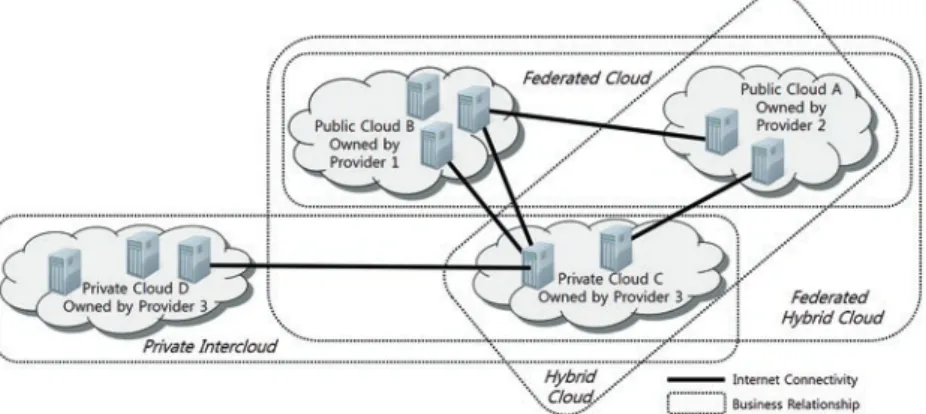
The first group includes the cost of purchasing computer equipment such as servers and storage devices for internal use (Alford and Morton 2009; Altmann and Rohitratana 2010; Kondo et al. The second group includes the cost of purchasing network equipment such as routers (Alford and Morton 2009).
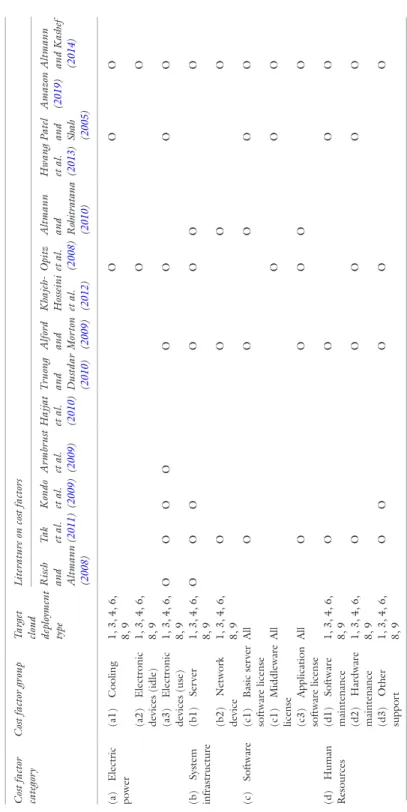
Considering the need for service placement and revenue sharing algorithms, a system architecture for a cloud federation platform and a use case for applying an economic model in cloud federation deployments can be envisioned as shown in the following figure (Fig. 5.2). It illustrates that a cloud service user in need of application deployment in the cloud initiates an application deployment request (step 1) through a cloud provider (Cloud Provider 1) that is a member of a cloud federation. Specifically, we contribute to the understanding of this topic in the context of digital platforms by studying (1) what kind of direct and indirect value is generated in the focal partner network, (2) how the focal network and power positions evolve over time, and (3) how power asymmetry affects value creation in the network.

To operate successfully in the ecosystem, a company needs to recognize the potential and current actors in the ecosystem that contains the company's partner network (Ojala and Helander 2014). In the platform context, the network has the characteristics of the triangular structure typical of two-sided markets (Eisenmann et al. 2006). Further, the focal company must identify the value of its own offering and how to deliver this value to benefit other actors in the network.
Middleware providers, who sell software to telecom operators, benefited from G-cluster's platform as they were able to integrate on-demand game services into telecom boxes. Portals (such as Yahoo) were also important partners within the partner network that gave PC users access to G-cluster's cloud gaming service and enabled multihoming of the service. Over a five-year period, changes in the G-cluster ecosystem, markets and services affected the partner network (Fig. 6.2).
Content (games) for the platform • References G-cluster → telecom/IPTV operators • Economic value • More content for the services. Focal relationship Direct value Indirect value Relation power and position Source of power G-cluster → middleware software providers • New function for the service • Market potential • Equal • Middleware software providers had contacts with telecom/IPTV operators. Middleware software providers → G cluster • Network with IPTV providers G cluster → portals • Economic value • More content for the services.
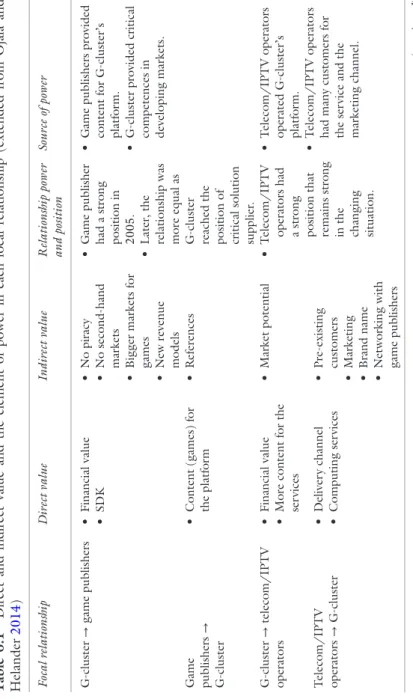
These actions have increased the position of the platform provider in the partner network and made it more concentrated. The chapter conceptualized the value creation and evolution of the partner network in the contemporary context of digital ecosystems. This chapter explores a selection of these new paradigms, which may yield fruitful research paths in the future.
Netflix (transcoding, monitoring, disaster recovery and compliance), Seattle Times (image resizing), Zillow (real-time mobile stats), and Major League Baseball Advanced Media (player and game data analytics and stats) (Lynn et al. 2017). Composable architectures assume that resources (e.g. compute, memory, storage, networking, etc.) can be decoupled from the hardware on which they reside and assembled and reassembled using a control software layer to meet exact workload requirements on demand (Ferreira et al. 2019). But despite this optimism, there are significant challenges in AIOps adoption, including changes in innovation methodologies, including understanding business value and constraints, engineering mindsets, and technical practices, including data quality (Dang et al. 2019).
From a business value research perspective, machine learning and artificial intelligence present additional challenges, as the black-box nature of these technologies can make questioning and interpretation difficult. As such, companies must consider the geographic distribution and mobility of smart objects and the latency at each location, the heterogeneity of smart objects, interoperability and clustering, the urgency and ability to interact in real time, and the scalability and agility of aggregated fog node clusters (Iorga et al suggest that there are two main sources where companies can gain business value from the IoT – real-world visibility and business process decomposition. From a cloud computing perspective, the IoT involves key technical decisions that can impact the business value created for the company , e.g.
How can the breakdown of total investments in cloud computing take into account synergies and complementarities? How, why and when do cloud computing assets, cloud computing capabilities, IS assets and capabilities, and socio-organizational capabilities influence each other and together create internal value. How, why, and when do cloud computing assets, cloud computing capabilities, IS assets and capabilities, and socio-organizational capabilities create competitive value, thus executing a value creation process.
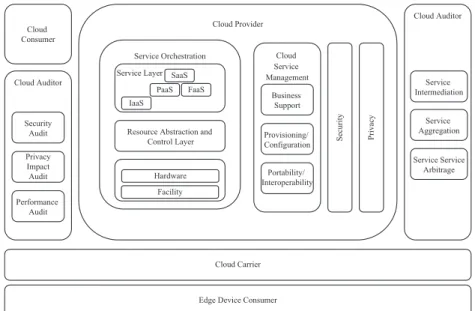
This research question recognizes that cloud computing assets and capabilities are a subset of broader IS assets and capabilities and have a bidirectional relationship with socio-organizational capabilities. In the context of cloud computing, companies are more than likely to inherit supply chain assets and capabilities and thus have time-bound capabilities or what Carroll et al. NIST Cloud Computing Reference Architecture: National Institute of Standards and Technology Recommendations (Special Publication 500-292).
